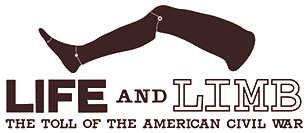
Class 3: Estranged from Family and Friends
Introduction:
The third class focuses on how soldiers came to feel estranged from civilians whose view of war changed little from 1861. Soldiers retained a firm belief that the war would be decided by heroic action, but life in the ranks gradually chipped away much of their idealism. Earl Hess’s article explores how civilians imagined battle through soldier letters and newspaper reports. After students complete this foundational reading, they should turn to the assigned primary sources. The assigned letters were written by soldiers who felt disconnected with the people back home and frustrated by civilian naïveté. Students should pay attention to how the constant presence of death and chaos of battle hardened soldiers, transforming some into meditative killers who started to wonder if individual action and bravery was enough in the face of rifled weapons and entrenchments. Believing that outsiders could not understand what they were going through, soldiers turned to comrades and even the enemy as confidants. Mary Livermore’s account further attests to the differing perceptions between civilians and soldiers.
Readings:
Primary:
Connolly, James Austin. Three Years in the Army of the Cumberland: The Letters and Diary of Major James A. Connolly. Edited by Paul M. Angle. Bloomington: Indiana University Press, 1959, 106–7.
Livermore, Mary A. My Story of the War: A Woman’s Narrative of Four Years Personal Experience. Hartford: A.D. Worthington, 1888, Chap. 7. Available online at http://www.archive.org/stream/mystoryofwarwoma00live#page/184/mode/2up (accessed 09/30/2011).
Lyman, Theodore. Meade’s Headquarters, 1863–1865. Edited by George R. Agassiz. Salem, New Hampshire: AYER Company, 1987, Reprint, 186–89.
Smithsonian, National Museum of American History. “Portrait of a Nurse” in The Diary of a Civil War Nurse online exhibition. Available online at http://americanhistory.si.edu/documentsgallery/exhibitions/nursing_2.html (accessed 09/30/2011).
Secondary:
Hess, Earl J. “‘Tell Me What the Sensations Are’: The Northern Home Front Learns about Combat.” In Union Soldiers and the Northern Home Front, Wartime Experiences, Postwar Adjustments. Edited by Paul A. Cimbala and Randall M. Miller. New York: Fordham University Press, 2002, Chap. 4.
Discussion Questions:
- How does Hess’s article help us understand why the relationship between soldiers and civilians became strained over time? Once you have outlined the contours of Hess’s argument, turn to Mary Livermore’s account and respond to the following question: In what ways does Livermore, as a member of the medical community, sanction courage and early war notions of manliness that some soldiers came to question?
- After reading Hess’s article do you believe that Civil War soldiers were responsible for lingering idealism on the home front?
- As the war continued, soldiers and civilians were increasingly at odds over a range of issues. How does the diary entry of Theodore Lyman and James Connolly’s letter help us understand the divide between the army and the people back home? Lyman’s notions as to how one can establish truth during a time of war are important in understanding why he only trusts soldiers. Connolly only looked toward the army to find support and understanding. Finally, does the inexpressibility of war figure into their strong sense of comradeship?
- Does the estrangement between civilians and soldiers during the Civil War offer insight into the relationship between soldiers and civilians in modern wars?


